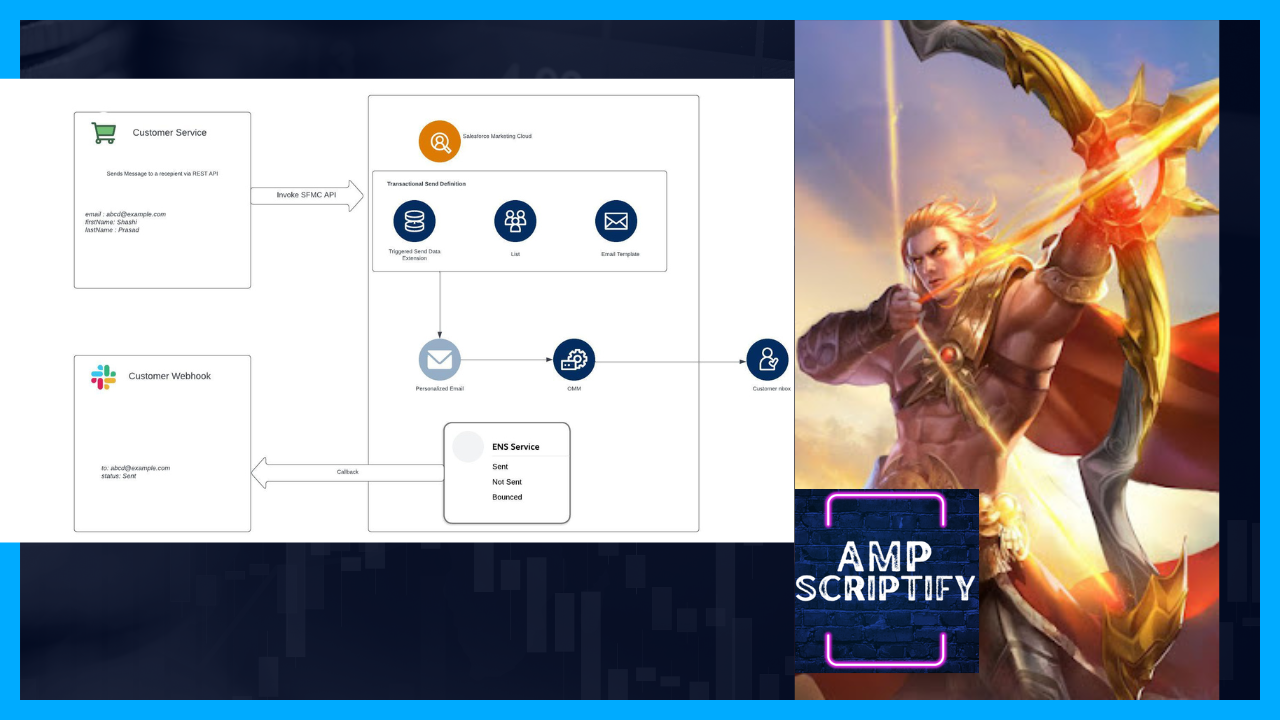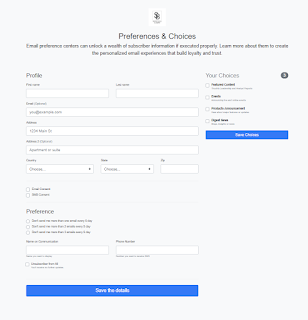Resolving Challenges: Tackling PUT, PATCH, and DELETE Operations in REST API Marketing Cloud Integration
In this article, we delve into the common challenges encountered while implementing PUT, PATCH, and DELETE operations in the Marketing Cloud REST API and provide effective solutions to overcome them. We explore the complexities of updating and modifying resources within the Marketing Cloud ecosystem, handling partial updates, managing data consistency, dealing with authorization and authentication issues specific to Marketing Cloud, and ensuring proper error handling. By addressing these challenges, developers can optimize their interactions with the Marketing Cloud REST API, enabling seamless integration and efficient data management within the Marketing Cloud platform.
In addition to tackling the challenges of PUT, PATCH, and DELETE operations, another aspect to consider is the limited support for these operations within the core library of Marketing Cloud's REST API. The core library primarily focuses on providing comprehensive support for POST and GET operations, which are widely used and crucial for data interaction within the Marketing Cloud ecosystem.
When working with the core library, developers need to align their implementation strategies around these supported operations. This means that only POST and GET requests are considered valid and supported within the context of the core library. Any attempts to use PUT, PATCH, or DELETE operations may result in errors or unexpected behavior.
It's important for developers to familiarize themselves with the documentation and guidelines provided by Marketing Cloud to understand the specific use cases and best practices for utilizing POST and GET operations effectively. By doing so, developers can maximize the benefits of the core library and seamlessly integrate their applications with Marketing Cloud, enabling robust marketing automation and personalized customer experiences.
Leveraging Platform Functions for SSJS in Marketing Cloud
Similar to AMPscript, platform functions for Server-Side JavaScript (SSJS) in Marketing Cloud provide marketers and developers with a robust toolkit to enhance marketing automation and personalization. These functions offer a familiar programming language that allows for data manipulation, custom business logic, integration with external systems, and seamless execution of dynamic campaigns.
By leveraging platform functions available within Marketing Cloud, developers can successfully accomplish these operations that were not directly supported by the core library. The platform functions offer a more extensive set of capabilities, allowing for resource updates, modifications, and deletions using the appropriate HTTP methods. By utilizing these platform functions, developers can seamlessly integrate and interact with the Marketing Cloud REST API, unlocking the full potential of their marketing automation and data management workflows.
Exploring Content Syndication Functions in Marketing Cloud
Beyond the standard HTTPGet() and HTTPPost() objects. These functions empower marketers to specify content types, utilize different HTTP methods, and achieve greater customization and integration possibilities
Content Syndication Objects :
In this discussion, we will focus specifically on Script.Util.HttpRequest, a powerful platform function within Marketing Cloud that enables robust HTTP requests and content syndication capabilities. By utilizing Script.Util.HttpRequest, marketers can efficiently retrieve, send, and manage HTTP-based content, leveraging various HTTP methods, headers, and parameters. This function provides a comprehensive solution for content syndication, allowing marketers to synchronize and distribute their marketing content seamlessly across multiple channels.
Script.Util.HttpRequest
Script.Util.HttpRequest(1)
- setHeader() - Name and value pairs of headers sent when performing the GET request, which disables content caching
- removeHeader() - String value indicating header to remove from collection sent with request
- clearHeader() - String value indicating removal of all custom headers set for the request
- send() - Perform a send of the request to the website and returns a response data object
This sample code performs a PATCH request with a "Authorization" header and "Bearer AccessToken". The function then wreturn the response after the send() request.
<script runat="server">
function InvokeRESTAPIPATCH(installPackageConfig,accessTokenConfig,methodAPIConfig,payload,key)
{
// Call AccessToken function to retrieve for Access Token
var accessTokenResult=AccessToken(installPackageConfig,accessTokenConfig);
var statusCode = accessTokenResult["StatusCode"];
var response = accessTokenResult["Response"][0];
var accessToken = Platform.Function.ParseJSON(response).access_token;
var tokenType = Platform.Function.ParseJSON(response).token_type;
//Write("Access Token :" + tokenType + " " +accessToken +"\n");
var httpHeadersName=["Authorization"];
var httpHeaderValues=[tokenType + " " +accessToken];
// Call DataExtensionRowsRetrieve function to retrieve for API Config
var APIConfiDE=DataExtensionRowsRetrieve(installPackageConfig);
var restAPI=APIConfiDE[0]["RESTAPI"];
// Call DataExtensionRowsRetrieve function to retrieve for APIMethod Config
var APIMethodDE=DataExtensionRowsRetrieve(methodAPIConfig);
var httpProtocol = APIMethodDE[0]["HttpProtocol"];
var methodURL = APIMethodDE[0]["MethodURL"];
var methodURL_1 = APIMethodDE[0]["MethodURL_1"];
var methodURL_2 = APIMethodDE[0]["MethodURL_2"];
var contentType = "application/json;charset=UTF-8";
if(methodURL_1)
{
var URL=restAPI+methodURL+methodURL_1.replace("{configKey}",key);
}
else
{
var URL=restAPI+methodURL;
}
//Write('\n' + URL + '\n' );
var postPayload=payload;
//Write('\n' + Stringify(postPayload) + '\n' );
var request=new Script.Util.HttpRequest(URL);
request.emptyContentHandling = 0;
request.retries = 2;
request.continueOnError = true;
request.setHeader("Authorization",tokenType + " " +accessToken);
request.method = "PATCH";
request.contentType = "application/json; charset=utf-8";
request.postData = Stringify(postPayload);
var httpResponse = request.send();
return httpResponse;
}
</script>
<script runat="server" >
Platform.Load("core", "1");
var contentDE = Platform.Function.ContentBlockByKey("DataExtensionRowsRetrieve");
var contentSimpleOperators = Platform.Function.ContentBlockByKey("SimpleOperators");
var contentAccessToken = Platform.Function.ContentBlockByKey("AccessToken");
var contentRESTAPIPOST = Platform.Function.ContentBlockByKey("InvokeRESTAPIPATCH");
var contentDefineDataExtensionRetrieve = Platform.Function.ContentBlockByKey("DefineDataExtensionRetrieve");
try{
// Define properties for API Config
var installPackageConfig=DefineDataExtensionRetrieve("APIConfig","Equals","TransactionalAPI","InstallPackages");
// Define properties for Access token
var accessTokenConfig=DefineDataExtensionRetrieve("MethodName","Equals","Request SFMC Token","APIMethod");
// Define properties for REST API Method call
var methodAPIConfig=DefineDataExtensionRetrieve("MethodName","Equals","Update Contacts","APIMethod");
var payload={
"contactKey": "Shashi1",
"attributeSets": [
{
"name": "Email Addresses",
"items": [
{
"values": [
{
"name": "Email Address",
"value": "b2.shashi+updated@gmail.com"
}
,
{
"name": "HTML Enabled",
"value": true
}
]
}
]
}
,
{
"name": "Email Demographics",
"items": [
{
"values": [
{
"name": "First Name",
"value": "Sasee"
}
]
}
]
}
]
}
var key="";
var restResponse=InvokeRESTAPIPATCH(installPackageConfig,accessTokenConfig,methodAPIConfig,payload,key);
Write((String(restResponse.content)) + '\n');
//Write((String(restResponse.headers["returnHeader"])) + '\n');
}
catch(ex)
{
var APIExceptionDE = DataExtension.Init("APIException");
APIExceptionDE.Rows.Add(
{
Message:ex.message
,Description:ex.description
,InnerException:ex.jintException
,FunctionName:"Main Block"
}
);
Write(ex.message + '\n');
Write(ex.description + '\n');
Write(ex.jintException + '\n');
}
</script>







Comments
Post a Comment